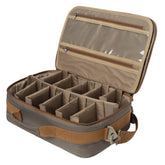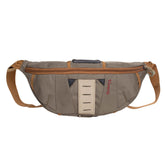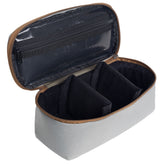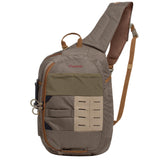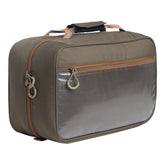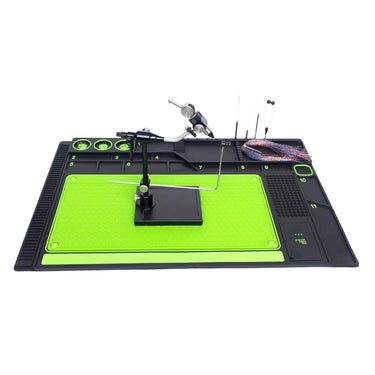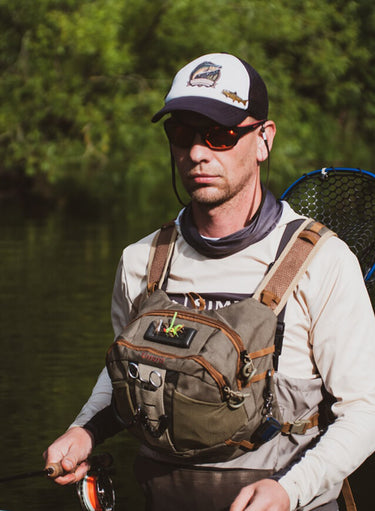Flies: The Ultimate Waterproof Fly Fishing Kit for Travelers
When I think about enhancing my fly fishing experience, the right selection of flies is crucial. A waterproof flies box kit is essential for keeping my flies organized and accessible, ensuring that I’m always prepared for changing conditions on the water. Having various types of flies, such as nymphs, dry flies, wet flies, and streamers, caters to different fishing environments and seasons.

Exploring options like a barbless fly fishing kit is beneficial as well. These flies make catch and release easier, promoting sustainability in the sport. Along with realistic flies that mimic natural bait, I find my odds of attracting fish significantly increase, enhancing my overall success on the water.
For those who love to fish while traveling, a fly fishing travel kit is a smart investment. Compact and versatile, this kit allows me to carry my favorite flies without the bulk. Whether I’m targeting freshwater or saltwater species, having the right flies at my fingertips opens up more opportunities for memorable catches.
Fly Fishing Essentials

In fly fishing, the right equipment and knowledge about flies can significantly enhance the experience. Selecting appropriate rods and understanding the different types of flies is crucial for success on the water.
Selecting Your Fishing Rods
Choosing the right fishing rod is fundamental. I generally recommend a 4 to 6 weight rod for trout and a heavier 8 to 10 weight rod for bass or bonefish. The length should typically be between 8.5 to 9.5 feet, providing the leverage needed for casting and controlling the line.
It's also important to consider the rod's action. Fast action rods provide quick sensitivity and are suitable for windy conditions. Medium action rods offer versatility and are perfect for beginners.
When selecting a rod, examine the materials: graphite rods offer durability and sensitivity, while fiberglass rods are more forgiving for novice anglers.
Understanding Fly Types
Understanding the different fly types is essential to achieving results. I primarily use three categories: dry flies, wet flies, and streamers.
- Dry flies float on the surface and imitate insects. Popular choices include the Elk Hair Caddis and the Adams.
- Wet flies, like nymphs, are submerged and mimic the aquatic stage of insects. The Pheasant Tail Nymph is a classic example.
- Streamers simulate baitfish and are effective for targeting larger species. I often use woolly buggers for their versatility.
Matching the fly type to the conditions can make a significant difference. Always consider the target species and local insect activity.
Fly Tying Techniques

I focus on two essential techniques in fly tying that greatly enhance my success on the water: creating realistic flies and constructing barbless flies. Both techniques require precision and an understanding of materials, which can significantly improve the effectiveness of my flies.
Creating Realistic Flies
When I create realistic flies, I aim to mimic the appearance and movement of natural insects. Using a Realistic flies kit, I select materials that closely match the colors and textures of the target species.
-
Hooks: I choose hooks that imitate the appropriate size and shape of the insect.
-
Body Materials: I often use synthetic fibers or natural materials like fur to add realism.
-
Finishing Touches: Adding details such as legs or wings can enhance the overall realism.
By focusing on these components, I increase the chances of attracting fish that are discerning and selective.
Barbless Fly Construction
Utilizing a Barbless fly fishing kit is vital for both conservation and ease of removal. I find that barbless hooks are kinder to fish and facilitate quicker catch and release.
-
Choosing Hooks: I use high-quality hooks designed without barbs, which can still securely hold fish during the fight.
-
Tying Techniques: Proper knotting and tight wraps are critical. I often use a whip finish to secure my fly.
-
Testing: Before heading out, I test my flies for strength and durability. Barbless flies should stay intact during casting and while in use.
Focusing on these factors helps me consistently produce effective barbless flies that cater to various fishing conditions.
Tackle Organization and Maintenance
Proper tackle organization and maintenance are crucial for every angler. Ensuring that your fishing flies and gear are well-organized can enhance your fishing experience and prolong the life of your equipment.
Waterproof Storage Solutions
I prioritize waterproof storage when organizing my fishing tackle. A waterproof flies box kit is essential for protecting my flies from moisture, which can damage them and decrease their effectiveness. I prefer boxes made from durable ABS plastic that are both lightweight and sturdy.
When selecting a waterproof kit, I look for features like tight-sealing lids and adjustable compartments. These elements help keep my flies sorted and accessible. Additionally, consider options with clear lids for quick visibility.
Regular maintenance of these storage solutions is also vital. I ensure to clean my boxes periodically to remove any residue or moisture buildup, which maintains the integrity of my flies and gear.
On-The-Go Fly Fishing Strategies
When I think about fly fishing while traveling, having the right setup is key. I focus on creating a portable kit and adapting my strategies to different streams.
Assembling a Travel-Friendly Kit
I prioritize convenience and functionality when assembling my fly fishing travel kit. I include a compact waterproof flies box to keep my gear safe from the elements. This ensures that my flies remain organized and easily accessible.
Essential items for my kit:
- Barbless flies: These are easier to remove and less harmful to fish.
- Realistic flies: They mimic natural bait effectively.
- Multi-tool: Useful for various tasks like cutting line or adjusting tackle.
Also, I ensure that the kit is lightweight. I can easily find these components on platforms like Aliexpress, offering competitive prices for quality gear. Packing my kit with essentials allows me to enjoy spontaneous fishing adventures.
Adapting to Different Streams
Adapting to different streams is crucial for successful fly fishing. Each stream has unique conditions, which require specific strategies.
I consider factors such as water clarity, flow rate, and local insect life. For clear streams, I choose realistic flies that fish find appealing. In fast-moving waters, I might opt for more vibrant barbless flies to attract attention.
Using a travel kit, I can make quick adjustments based on these observations. Carrying a variety of flies in my waterproof box allows me to switch tactics without delay. Paying attention to the local environment enhances my overall fishing experience, ensuring I stay prepared for any situation.



